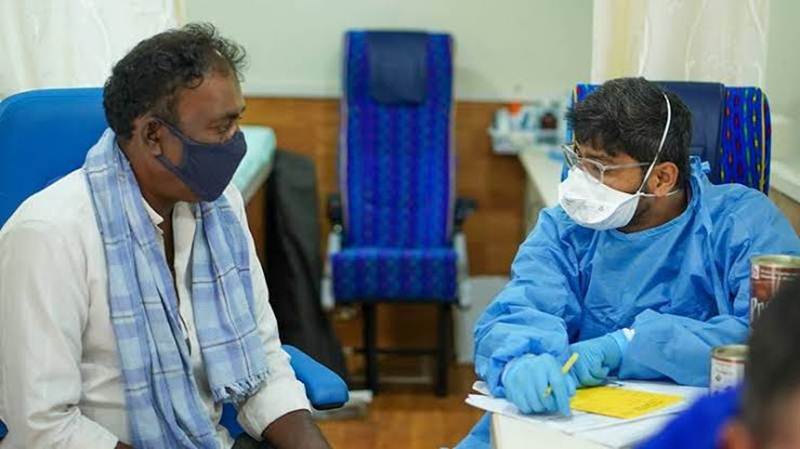With a marked agitation in his voice, 35-year-old Rajnish Gautam told Gaon Connection that for the last few weeks, his life has been a daily struggle to arrange enough money to buy the next oxygen cylinder that is needed to keep his father, a COVID-19 patient, alive.
“On April 11, my parents fell sick. We got them admitted to a hospital in Dubagga (Lucknow) but my mother passed away three days later. My father is still being treated. Till now, I have spent more than three lakh rupees (Rs 300,000) after asking for loans from friends and relatives,” Gautam said.
“Now relatives don’t pick up my calls as they fear I’ll ask for more loans,” he added.
India has recorded more than 352,000 new COVID19 cases in the last 24 hours ending 8 am today (April 26), raising the country’s total infections to over 17.3 millions. Out of these, over 2.8 million cases are currently active. With 2,812 new fatalities, the death toll in the country due the virus is over 195,000.
Before getting embroiled in his parent’s treatment, Gautam used to work as an attendant to a surgeon at the Sanjay Gandhi Post Graduate Institute (SGPGI) in Lucknow and earned Rs 10,000 in a month.
“There is no shortage of oxygen at the hospital as of now. The cylinder has to be refilled every day. If we run the cylinder at two litres per hour, then it lasts 12 hours. Father’s condition has improved but doctors have said that it will be a lot more convenient if we somehow arrange an oxygen condenser,” he told Gaon Connection.
Gautam hasn’t told his father about his mother’s death yet. Apart from his father, Gautam’s has his younger sister, elder brother, his sister-in-law and their two children in the family to look after. His brother is infected as well and is being treated at another hospital.
In these testing times, Gautam’s struggle for raising funds for the treatment of his father is not a case in isolation. The pandemic has thrown lives of thousands out of gear and the plight of somehow arranging for hospital beds, medicines, and oxygen cylinders is a set of challenges that is common in these countless cases.
Similar is the case of 38-year-old Hemant Shukla, whose younger brother, another COVID19 patient, is admitted at a private hospital in Lucknow. His hospital bills have soared to Rs 200,000 and they are yet to be paid.
Also Read: “We were hoping to go back to our jobs… but Corona has again ruined all prospects”
“Hospital bill is soaring and I am having a tough time managing the costs of medicines,” Shukla told Gaon Connection.
“I have already shifted my brother from two hospitals. I paid a bill of Rs 150,000. I have spent almost Rs 500,000 in the last 15-16 days. All my savings have exhausted and I have taken additional loans to get my brother treated,” he added.
Shukla’s brother has been injected with the drug Remdesivir six times. “The first injection that I bought cost me six thousand rupees. But ever since then, the injection has cost me way more — I have even paid Rs 18,000 to Rs 20,000 for a single injection,” he said.
Last summer, Gaon Connection conducted a nationwide survey on the impact of the lockdown on rural India. A total of 25,000 people were surveyed from across 25 states and union territories. Twenty three per cent respondents said that they had to take loans in order to survive the lockdown. Out of these, 71 per cent took loans to cope up with the domestic expenses whereas 10 per cent availed loans to pay medical bills, 8 per cent for agricultural usage, and 11 per cent mentioned other reasons for taking loans.



















